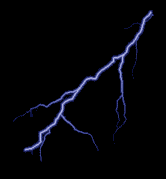The Complete Cthulhu Mythos Tales
 |
 |
 |
 |
 |

- Publication Date: April 29, 2016
- Written by: H. P. Lovecraft
- Page count: 593
When I was first starting to get into the Cthulhu Mythos, figuring out where to begin was a little bit of a daunting task. For over 80 years, dozens of authors have expanded upon the foundation that H. P. Lovecraft laid by referencing each other's creatures, places or deities, and adding original aspects of their own. Because of the nature of its creation, the Mythos isn't so much an actual "series", but more of a fictional universe for authors of cosmic horror to play around in. While the universe of the Mythos is vast and ever-expanding, the best way to get introduced to it is to go back to its original source. I picked up this collection in my early years of college, and I can't think of a better introductory book for the legendary series. If you're looking to dip your toes into the pool of existential cosmic horror, then this is the perfect book for you!
As the title implies, this book collects nearly all of the Cthulhu Mythos tales that H. P. Lovecraft wrote. Despite being called "complete", it is missing a few stories here and there. One major omission is Lovecraft's only completed novel, The Case of Charles Dexter Ward, which was the first story in which the major Mythos deity Yog-Sothoth was mentioned. I'm honestly ok with it being left out, as it has never been one of my favorite stories of his. It's very drawn-out and a little boring, and I've always used it as an example to show why he was better suited for short stories and novellas. Other omissions include The Picture in the House, which featured the first mention of the infamous town of Arkham, and Herbert West - Reanimator, which featured the first appearance of Miskatonic University. Because those stories only feature the shared geographical locations with no other connections to Mythos lore, it makes sense that they were left out as well for simplicity's sake. All of the Dreamlands tales are also excluded, but since those stories take place in a parallel world inside of the Mythos, it's really best to keep them separate from the mainline stories. Many of these "side stories" are still worth reading, and can be easily found in other collections.
Even though quite a few stories are missing, this is still a fantastic collection. It collects all of the central "core" stories that make up the foundation of the Cthulhu Mythos, and features some of the best writing that Lovecraft had to offer. My favorite thing about this book is the fact that all of the stories are sequenced in the order in which they were written. Not only does this allow you to see how Lovecraft's writing and language usage evolved over time, but you get to experience how the Mythos was gradually assembled story-by-story. Let me give you a quick illustration of how this is done. Dagon is the first story in the book, and it establishes the idea of ancient civilizations who worshipped unseen creatures or deities, as well as the horror of what lurks in unknown areas. Following this is Nyarlathotep, which establishes the titular being who would be a major player later on. Then, The Nameless City features not only the first mention of a man named Abdul Alhazred, but another lost civilization featuring ancient, monstrous inhabitants. Next, The Hound features the first appearance of Alhazred's dreaded Necronomicon, a creation that would eventually transcend Lovecraft's writings and enter pop culture as a whole. All of these disparate pieces would finally come together in The Call of Cthulhu, a classic work of cosmic horror that acts as the official launching pad from where the Mythos would progress. The world-building in these stories is so satisfying to read, as a small reference or name-drop in one story will be expanded into a fleshed-out concept in a later one. The fictional universe gradually expands in scope and becomes increasingly weirder with each story, which makes reading them in order a very rewarding experience.
Along with the mainline stories, this book also features several works that Lovecraft did in collaboration with other authors. These collaborations are often set in a different part of the country than the typical New England settings, usually Oklahoma or other western states. They also establish other gods such as Shub-Niggurath that would later be referenced in Lovecraft's longer stories. My favorite of these is The Curse of Yig, a story about settlers' encounters with an ancient snake god. One of its major highlights is a scene that features a human being twisted and distorted into a snake-like form after encountering Yig, and the image described is one of the more disturbing ones from this era of horror stories. Another one of note is The Mound, a story which features a lengthy deep-dive into an ancient subterranean world beneath a Native American burial mound. This theme of in-depth explorations into unknown civilizations would later be revisited and perfected in At the Mountains of Madness. While many of Lovecraft's collaborative works are wildly uneven in my opinion, the ones featured here are easily the strongest of them, and are well worth standing alongside the more famous Mythos tales.
I could infodump about these stories for so long, but I feel like I should stop rambling and let you experience them for yourself. The Cthulhu Mythos is a dark, uncaring, chaotic universe where humanity is as insignificant as a speck of dust about to be blown away. If that appeals to you, grab a copy of this and read it on a rainy night with some candlelight. Just be careful not to shatter your mind with all of the forbidden knowledge.



